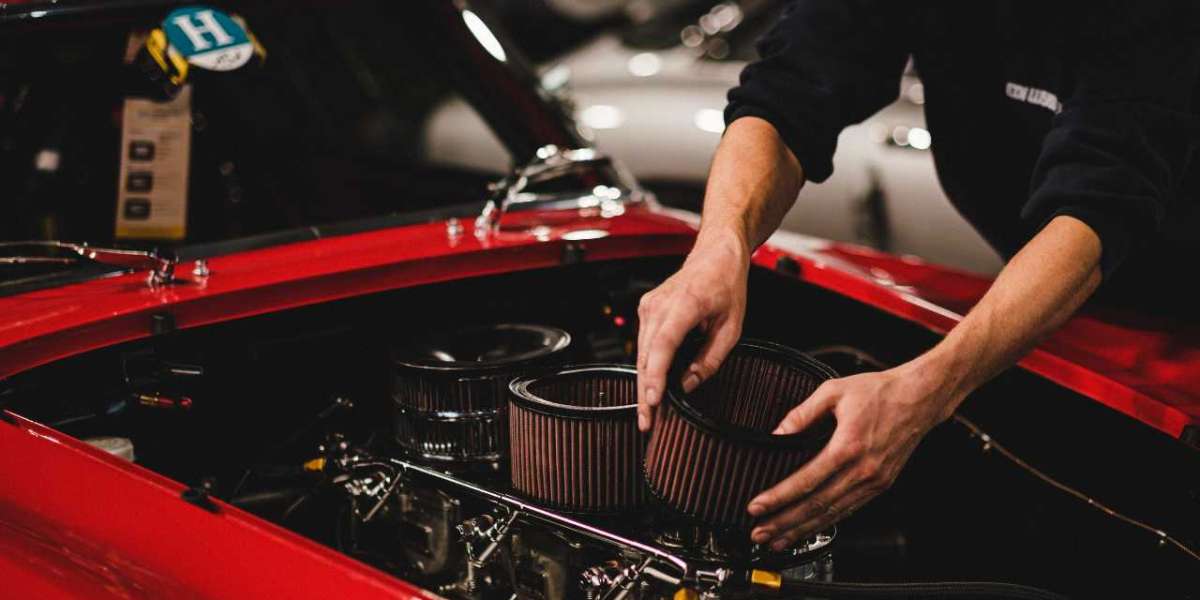If your car has been hesitating, losing power, or showing signs of poor fuel economy, the culprit might be a clogged fuel filter. Many car owners wonder—can I replace a fuel filter myself? The good news is yes, you can. With the right tools, safety precautions, and a bit of patience, replacing a fuel filter is a doable DIY project.
A new fuel filter ensures clean, uninterrupted fuel flow to your engine. It prevents dirt, rust, and contaminants from reaching the injectors, keeping your vehicle running smoothly. Just like using a Mopar oil filter during oil changes ensures your engine’s longevity, installing a quality fuel filter—such as the motorcraft fd 4617 fuel filter—helps protect your fuel system from damage.
In this guide, we’ll walk you through everything you need to know: when to replace your fuel filter, how to do it yourself safely, and why choosing OEM-grade filters matters.
Why the Fuel Filter Matters
Your engine needs clean fuel for smooth operation. Over time, impurities from fuel tanks, pipelines, or gas stations build up in the system. The fuel filter acts as a gatekeeper, trapping these contaminants before they reach your injectors.
When the filter clogs, your car may experience:
Slower acceleration.
Rough idling or misfires.
Engine stalling under load.
Poor fuel economy.
A new fuel filter helps restore power, smoothness, and fuel efficiency—especially in older vehicles or those with high mileage.
When to Replace the Fuel Filter
Fuel filters don’t need replacing as often as oil filters, but they still wear out over time. Most manufacturers recommend replacement every 20,000 to 40,000 miles, depending on your driving conditions.
However, replace it sooner if you notice:
Difficulty starting the car.
Hesitation when accelerating.
Reduced performance during climbs or towing.
Frequent stalling.
If you drive in dusty areas or use lower-grade fuel, your filter will clog faster. Regular checks and timely replacement help avoid costly damage to injectors and fuel pumps.
Can You Replace a Fuel Filter Yourself?
Yes—you can replace a fuel filter yourself. The process is straightforward for many cars, especially older models with accessible filters along the frame or engine bay. However, newer vehicles may have filters integrated inside the fuel tank, which require professional handling.
Before you start, always check your vehicle’s owner’s manual for the exact location and type of fuel filter.
Tools and Materials You’ll Need
Before starting the replacement, gather the following tools and supplies:
New fuel filter (e.g., Motorcraft FD 4617 fuel filter or equivalent for your car).
Socket or wrench set.
Line disconnect tool (for quick-connect fittings).
Safety goggles and gloves.
Rags and a catch pan (to handle fuel spillage).
Jack and jack stands (if underbody access is needed).
Replacement clips or O-rings (if applicable).
Step-by-Step: How to Replace a Fuel Filter
⚠️ Safety First: Always work in a well-ventilated area, away from flames or sparks. Fuel vapors are highly flammable.
Step 1: Relieve Fuel System Pressure
Before removing the filter, relieve pressure from the fuel system.
Disconnect the negative terminal of the battery.
Locate the fuel pump fuse or relay in the fuse box and remove it.
Start the engine and let it run until it stalls—this releases residual pressure.
Step 2: Locate the Fuel Filter
Fuel filters are usually located:
Along the frame rail (under the car).
In the engine bay (near the firewall).
Inside or on top of the fuel tank (for newer models).
Consult your manual for the exact position.
Step 3: Prepare for Fuel Spillage
Place a catch pan beneath the filter. Keep rags handy to absorb any fuel that escapes when lines are disconnected.
Step 4: Disconnect the Fuel Lines
Use a line disconnect tool or wrench to remove the fuel lines from both ends of the filter. Most filters have arrows indicating the direction of fuel flow—make note of this for installation.
Step 5: Remove the Old Filter
Unbolt or unclamp the filter from its mount. Keep it upright to prevent fuel from spilling. Inspect the removed filter for signs of dirt or debris—it’s a good indicator of the fuel’s quality.
Step 6: Install the New Filter
Install the new Motorcraft FD 4617 fuel filter (or your car’s specified replacement). Ensure the arrow on the filter points in the direction of fuel flow (toward the engine). Tighten clamps or bolts securely.
Step 7: Reconnect Fuel Lines and Test
Reconnect the fuel lines and ensure they click or tighten firmly. Reinstall the fuel pump fuse, reconnect the battery, and turn the ignition key to the “On” position (without starting) a few times to pressurize the system.
Start the engine and check for leaks. Let it idle for a few minutes to confirm smooth operation.
Why OEM Filters Are Worth It
Not all filters are created equal. Cheap or off-brand filters may fit physically, but they often lack the proper filtration density or flow rate. This can lead to poor performance and premature fuel pump wear.
OEM filters like the Mopar oil filter and Motorcraft FD 4617 fuel filter are designed to meet your vehicle’s exact specifications. They maintain proper pressure, filtration, and durability for consistent performance.
Mopar Oil Filter: Ideal for Chrysler, Dodge, Jeep, and Ram vehicles. Keeps oil clean, maintains pressure, and extends engine life.
Motorcraft FD 4617 Fuel Filter: Perfect for Ford and Lincoln vehicles. Designed to remove microscopic contaminants while ensuring optimal fuel flow.
Using OEM-quality parts gives you peace of mind that your car is protected and performing its best.
Tips for a Successful DIY Replacement
Work safely: Avoid open flames or smoking near fuel.
Wear protection: Gloves and goggles prevent fuel burns and eye irritation.
Inspect for rust: Check the fuel lines and fittings for corrosion or leaks before reassembly.
Dispose properly: Never dump fuel on the ground; use a sealed container and follow local disposal rules.
Double-check flow direction: Installing a filter backward can damage the fuel system.
If you’re ever unsure, it’s better to have a professional inspect your work.
Why Replacing Filters Regularly Matters
Fuel, oil, and air filters all contribute to how efficiently your engine runs. When one clogs, others work harder to compensate. Regular maintenance—using premium products like the mopar oil filter and Motorcraft FD 4617 fuel filter—ensures:
Smooth acceleration.
Longer fuel pump and injector life.
Improved fuel economy.
Lower emissions.
Clean filters protect both your engine and your wallet.
Common Mistakes to Avoid
Not relieving fuel pressure first: This can cause dangerous fuel spray.
Skipping the flow direction check: Reversing the filter can block fuel flow entirely.
Using poor-quality replacements: Non-OEM filters may clog faster or leak.
Forgetting to check for leaks: Always inspect connections before driving.
Avoid these mistakes to keep your DIY replacement safe and effective.
Final Thoughts
So, can you replace a fuel filter yourself? Absolutely. With the right tools, care, and a bit of confidence, it’s a manageable job that saves money and keeps your engine in top condition.
Just remember—use high-quality OEM parts. The Mopar oil filter protects your engine’s lubrication system, while the Motorcraft FD 4617 fuel filter ensures clean, steady fuel delivery for Ford vehicles. These trusted brands maintain factory-level performance and durability, giving your car the longevity it deserves.







